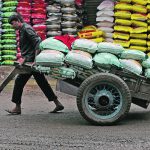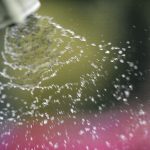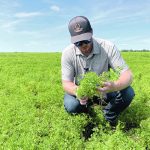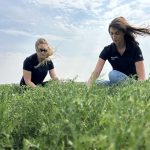Today’s cutting edge crop science could seem an intimidating matter, involving chemistry, biology and physics well beyond the elementary stuff most of us struggled with in high school. But it’s very, very easy to see and feel the excitement and enthusiasm of the folks who dedicate their careers and lives to developing new solutions and […] Read more
Tag Archives Pulses

India lifts duty on U.S. peas and lentils
The U.S. was shipping 300,000 to 350,000 tonnes of pulses to India annually prior to the tariffs. That trade has completely evaporated.

Argentine bean crop suffers amid fourth year of drought
Production losses could be severe for one of Canada’s main competitors as a lack of rain and potential frost risk threaten crops.

New fungicide soon available for lentils, peas and chickpeas
Active ingredient could help producers fight anthracnose, mycosphaerella and ascochyta in pulse crops
"This solution was developed specifically for this market, at BASF research farms, and has proven performance on major pulse diseases regardless of a pathogen's resistance status," said Sylvain Mialon, brand manager, fungicides, cereals & pulses at BASF.
Should I spray or should I go?
Deciding on a fungicide application to control mycosphaerella blight (aka ascochyta blight) in field peas can be difficult. Many variables are at play, including disease occurrence, product selection, application timing, single versus double treatments, application costs and potential returns on investment. To help, a fungicide decision worksheet is available to take some of the guesswork […] Read more

Slow down, up the volume, reduce the pressure
A spraying specialist weighs in on how producers can achieve effective deep canopy coverage while applying fungicides
In Agrimetrix research conducted in chickpeas and field peas, water volume was the most important factor associated with good canopy penetration.
Seeking sources of pea root rot resistance
Pea breeders are heading back to U.S. and French roots in search of genes for durable resistance against aphanomyces
Greenhouse testing at the University of Saskatchewan has shown that several pea varieties have partial resistance. But those results come with a large asterisk: indoor conditions are very different from field conditions.
Risk evaluation app predicts lentil disease
Growers are tempted to shorten their rotation because of high profit potential but the biggest enemy of lentils is aphanomyces root rot. Its spores can remain viable in the soil for a decade or longer.

New fungicide tackles resistance in pulses
Kirsten Ratzlaff of Corteva said the company’s new active ingredient, adavelt, is a florylpicoxamid/FRAC group 21 and the first broad-spectrum picolinamide fungicide for use against ascomycota pathogens.

New fungicide for lentils, peas and chickpeas
"This solution was developed specifically for this market, at BASF research farms, and has proven performance on major pulse diseases regardless of a pathogen's resistance status," said Sylvain Mialon, brand manager, fungicides, cereals & pulses at BASF.




